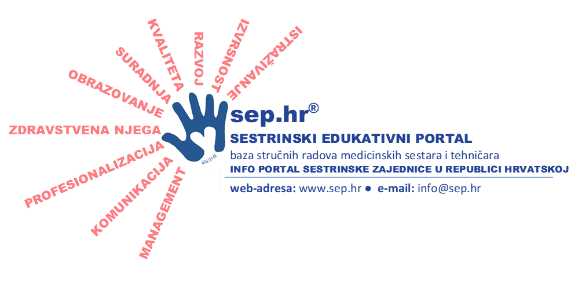Klopčover M., Seljak B., Kozamurnik O.
NICU, Department of Perinatology, Division of Obstetrics and Gynecology, University Medical Centre Ljubljana, Slovenia
closed endotracheal suction system, mechanical ventilation, intensive care, newborn, preterm
''2. Međunarodni kongres HDMSARIST-a''
Šibenik, 23.-26. travnja 2009. godine
For their survival, extremely immature or ill newborns often need help of modern and sophisticated
equipment and caring management by the professionally trained health personnel. As a rule, they are
transferred to neonatal intensive care units immediately after birth. Some newborns experience serious
respiratory problems requiring immediate action. These newborns need additional oxygen supply or
breathing support that is provided by different modes of modern ventilation. In intubated newborns, the NICU
personnel often has to perform the suction of endotracheal tube or cannula. Suction clears the airway and
opens it to the positive air pressure from the ventilator. However suction might be a dangerous and painful
procedure that may involve complications that are life-threatening to the newborn. Disconnecting respiratory
tube during aspiration increases the risk for adverse events, particularly in infants needing HFO or iNO
support. In these children closed type of suction is mandatory.
In NICU of Department for Obstetrics and Gynecology, University Medical Centre Ljubljana, Slovenia, 437
newborns were treated with artificial ventilation in the time period of 2002-2006. Gestational ages, of
ventilated newborns were as follows: 130 infants, < 28 weeks, 131, from 28 to 31 weeks, 86, from 32 to 36
weeks; 90 were born at term. Closed tracheal suction system was used in majority of infants, also in those
with very low birth weight. In spite of initial negative attitude towards this type of suction, problems with the
application itself, and the feeling that not entire secretion has been removed from the airways, closed suction
has become a routine and readily accepted method in our NICU.
